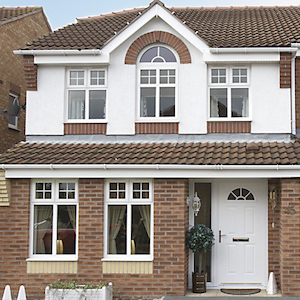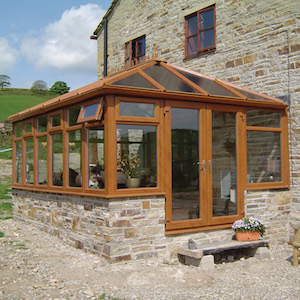Doors and windows are more than just functional components of a building; they are integral to the character, security, and energy effectiveness of homes and commercial properties across the United Kingdom. From the classic beauty of sash windows in Georgian townhouses to the smooth modernity of bi-fold doors in contemporary homes, the UK boasts a varied variety of designs and products in its windows and door landscape. Comprehending the subtleties of this market is vital for house owners, builders, and anyone seeking to upgrade or install new windows and doors in the UK.
This article explores the world of doors and windows in the UK, exploring the various types available, the typical materials utilized, the regulatory requirements they should fulfill, and the key elements to think about when choosing for your home.
A Gateway to Style and Functionality: Exploring Door Types in the UK
Doors are the inviting handshake of any building, providing gain access to, security, and contributing considerably to the overall visual. In the UK, a wide range of door types deal with diverse needs and architectural styles.
Front Doors: The main entry point of a home needs to be both protect and visually attractive. Typical front door materials in the UK include:
Internal Doors: These doors specify spaces within a property, offering privacy and sound insulation. Typical types include:
Patio Doors: Connecting indoor living spaces with gardens or patio areas, these doors generate natural light and deal simple access to outside locations. Popular patio area door enters the UK consist of:
Letting the Light In: Understanding Window Types in the UK
Windows are important for natural light, ventilation, and the overall ambiance of a building. The UK uses a varied variety of window styles, each with its own characteristics and advantages.
Casement Windows: The most typical enter the UK, casement windows are hinged at the side or top and open outwards. They use excellent weather sealing and security.
Sash Windows: A traditional British design, especially widespread in period homes. Sash windows include 2 panels (sashes) that move vertically, typically reversed by weights and cables. They are known for their stylish appearance however can be less energy-efficient than modern-day window types if not properly maintained.
Tilt and Turn Windows: Offering versatility, tilt and turn windows can be tilted inwards for ventilation and completely opened inwards for simple cleansing. They are popular in modern homes and apartments for their functionality and security features.
Bay Windows: Projecting outwards from a structure, bay windows create extra interior space and offer broader views. They are often discovered in Victorian and Edwardian homes across the UK.
Fixed Windows (Picture Windows): Non-opening windows developed to optimize natural light and views. Frequently used in mix with opening windows for ventilation.
Product Matters: Choosing the Right Materials for UK Doors and Windows
The choice of material significantly impacts the efficiency, aesthetics, and life-span of doors and windows. In the UK, the most typical materials include:
uPVC: As mentioned formerly, uPVC is a widely used product for both doors and windows in the UK. It's budget-friendly, low upkeep, energy-efficient, and offers excellent security. Modern uPVC systems can also be made to simulate the look of timber.
Timber: A standard option offering natural charm and outstanding insulation homes. Sustainable timber sources are increasingly essential. Woods like oak are durable but more pricey, while softwoods like pine are more economical however need more frequent maintenance in the UK environment.
Aluminium: Increasingly popular for contemporary styles, aluminium is strong, light-weight, and long-lasting. It can be powder-coated in various colours and offers slim profiles, optimizing glass area. Thermally broken aluminium systems are important for energy performance in the UK.
Composite: Combining materials like timber, uPVC, and aluminium to utilize their best qualities. Frequently used for front doors, providing high performance in security, insulation, and weather condition resistance with different aesthetic choices.
Browsing Regulations and Standards in the UK
Windows and doors in the UK must adhere to rigorous structure guidelines and requirements to ensure security, energy performance, and accessibility. Key considerations consist of:
Building Regulations Part L (Conservation of Fuel and Power) and Part F (Ventilation): These regulations set minimum requirements for thermal performance and ventilation to lower energy usage and maintain healthy indoor air quality. Doors and window U-values (determining heat loss) and Window Energy Ratings (WERs) are crucial aspects.
Structure Regulations Part Q (Security): This part concentrates on security standards for windows and doors in brand-new residences to decrease the danger of robbery. Security features such as multi-point locking systems and laminated glass are necessary.
Building Regulations Part M (Access to and Use of Buildings): Ensures that buildings are accessible to all, including individuals with impairments. This can impact door widths, threshold heights, and window operation in specific scenarios.
British Standards (BS): Various British Standards connect to the efficiency and testing of windows and doors, covering aspects like weather condition resistance, security, and acoustic efficiency.
Energy Efficiency: Keeping Homes Warm and Bills Low
In the UK, where energy costs are a significant issue, energy-efficient windows and doors are essential. Double or triple glazing, thermal breaks, and energy-efficient frame materials all contribute to minimizing heat loss and enhancing a property's energy efficiency. Try to find windows and doors with high Window Energy Ratings (WERs), typically graded from A++ to G, with A++ being the most energy-efficient.
Security First: Protecting Your Home
Security is a critical factor to consider for windows and doors in the UK. Features to look for include:
Patterns in UK Door and Window Design
The aesthetics of windows and doors are continuously developing. Present patterns in the UK consist of:
Preserving Your Doors and Windows
Proper maintenance extends the lifespan and efficiency of doors and windows.
Conclusion
Selecting the right doors and windows for a UK home is a significant choice involving factors to consider of style, security, energy efficiency, and budget plan. By understanding the various types, products, guidelines, and patterns, property owners and contractors can make informed options that boost their properties and develop comfy, safe, and energy-efficient home. Whether you are remodeling a period home or developing a new residential or commercial property, the UK market provides a large range of windows and doors to satisfy every requirement and visual preference.

Often Asked Questions (FAQs)

Q: Do I need planning consent to replace my doors and windows in the UK?A: Generally, replacing windows and doors like-for-like in an existing dwelling does not need preparation consent. However, there are exceptions, especially in sanctuary, listed buildings, or if you are making significant changes to the look of your property. It is always best to contact your regional planning authority to confirm if consent is required.
Q: What is a U-value and why is it important for doors and windows?A: A U-value measures the rate of heat loss through a product. For doors and windows, a lower U-value suggests better thermal insulation. In the UK, Building Regulations set minimum U-value requirements for new doors and windows to make sure energy efficiency. Choosing windows and doors with low U-values can significantly lower heating bills.
Q: What are Window Energy Ratings (WERs)?A: Window Energy Ratings (WERs) are a system used in the UK to rank the energy performance of windows. They are graded on a scale from A++ (most effective) to G (least effective). WERs take into account aspects such as solar heat gain, heat loss, and air leakage to supply a comprehensive step of a window's energy efficiency.
Q: How typically should I replace my windows and doors?A: The life expectancy of windows and doors depends upon the material and quality of installation. uPVC and aluminium windows can last for 20-30 years or more, while timber windows might require changing faster depending upon upkeep. Look for indications of wear and tear, such as drafts, condensation within the glass panes, trouble opening and closing, or rot in timber frames, as signs that replacement may be required.
Q: What are the advantages of double or triple glazing in the UK?A: Double or triple glazing consists of two or three panes of glass with an insulating gas (like argon) in between. The benefits consist of:
Q: What are the security requirements I should search for in windows and doors?A: Look for doors and windows that fulfill or go beyond the requirements of Building Regulations Part Q (Security) or Secured by Design requirements. Key security functions include:
By considering these factors and comprehending the choices offered, it's possible to make educated decisions about doors and windows that boost both the charm and functionality of any UK property.
No Data Found!

